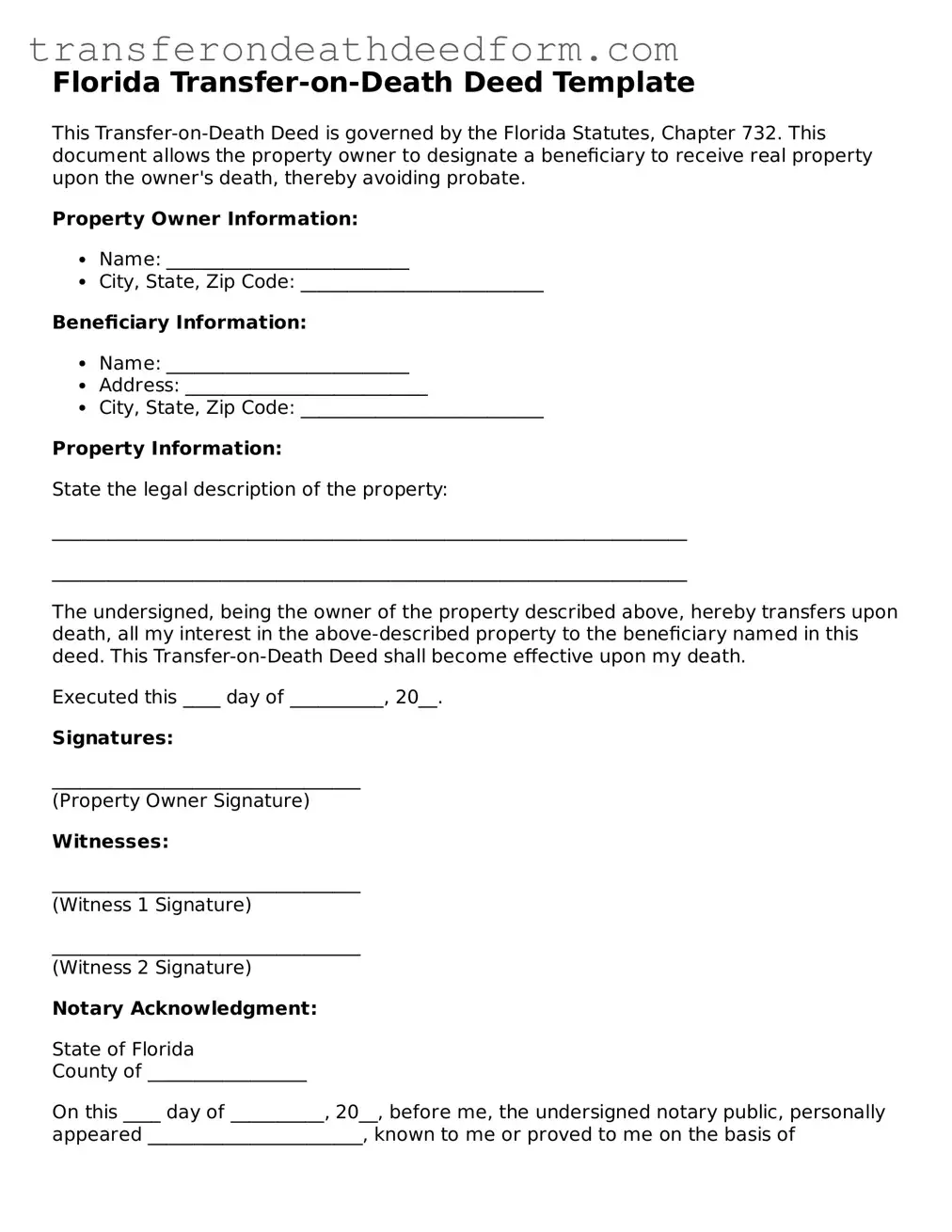Florida Transfer-on-Death Deed Template
This Transfer-on-Death Deed is governed by the Florida Statutes, Chapter 732. This document allows the property owner to designate a beneficiary to receive real property upon the owner's death, thereby avoiding probate.
Property Owner Information:
- Name: __________________________
- City, State, Zip Code: __________________________
Beneficiary Information:
- Name: __________________________
- Address: __________________________
- City, State, Zip Code: __________________________
Property Information:
State the legal description of the property:
____________________________________________________________________
____________________________________________________________________
The undersigned, being the owner of the property described above, hereby transfers upon death, all my interest in the above-described property to the beneficiary named in this deed. This Transfer-on-Death Deed shall become effective upon my death.
Executed this ____ day of __________, 20__.
Signatures:
_________________________________
(Property Owner Signature)
Witnesses:
_________________________________
(Witness 1 Signature)
_________________________________
(Witness 2 Signature)
Notary Acknowledgment:
State of Florida
County of _________________
On this ____ day of __________, 20__, before me, the undersigned notary public, personally appeared _______________________, known to me or proved to me on the basis of satisfactory evidence to be the person whose name is subscribed to the within instrument, and acknowledged to me that they executed the same in their capacity.
_________________________________
(Notary Public Signature)
My commission expires: ____________
This document should be recorded in the appropriate county office to be effective.
